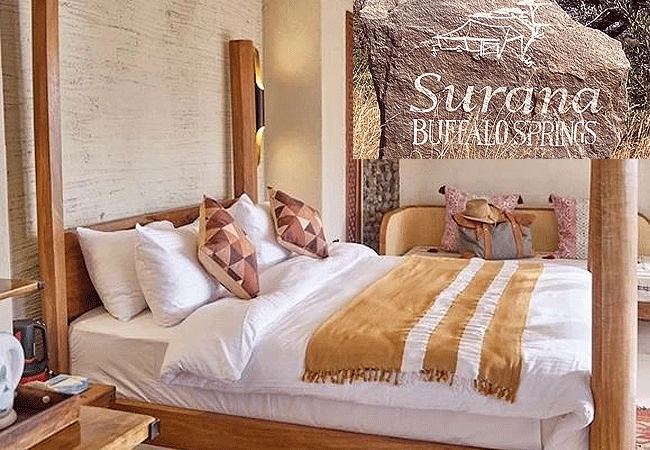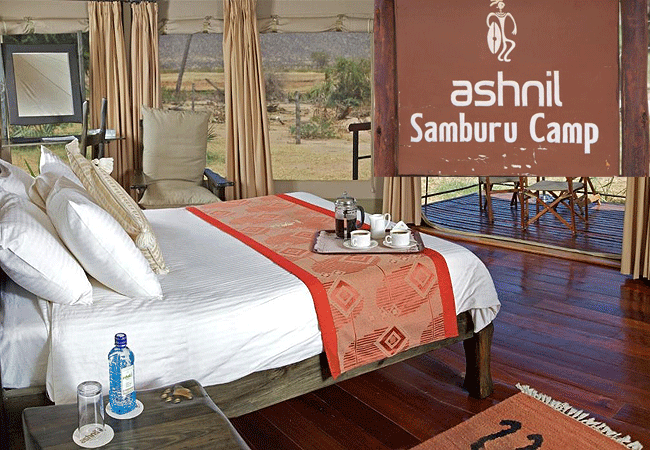Buffalo Springs National Reserve
Buffalo Springs National Reserve is a protected area in Isiolo County in northern Kenya, located south of the Samburu National Reserve, on the other side of the Ewaso Ngiro River. It is named after an oasis of clear water at its western end.
The reserve has an area of 131 square kilometers (51 sq mi), and its altitude ranges between 850 meters (2,790 ft) and 1,230 meters (4,040 ft) above sea level. Buffalo Springs National Reserve takes its name from an oasis of crystal clear water at the western end of the reserve.
It is reported that in the Second World War, an Italian bomber mistook Buffalos for humans and blew into a crater creating a large spring called Buffalo Springs. The Buffalo Springs are permanent and provide drinking water for the wild animals and residents of the nearby town called Archer’s Post.
When is the best time to visit Buffalo Springs National Reserve?
Temperatures range between 20ºC and 30ºC, with two rainy seasons—short rains in October/November and long rains from February to May. Wildlife viewing is best during the dry months of June to October and December to March, though the rains can make spotting animals more difficult.
How do I get to Buffalo Springs National Reserve?
By Road: Buffalo Springs National Reserve is about 355 km from Nairobi which takes an approximate 5 to 6 hour drive. To get to Buffalo Springs National Reserve from Nairobi, you begin by driving along the Thika Highway toward Isiolo Town. The journey is long but offers scenic views as you pass through small towns and markets.
As you continue, you’ll see Mount Kenya in the distance and move into rural farmlands. The road climbs past the Aberdares before reaching Nanyuki, where you can stop for refreshments. After crossing the equator near Nanyuki, the landscape becomes drier and more barren, with agricultural greenhouses along the way.
Upon arriving in Isiolo, you’ll encounter a bustling town with a mix of cultures, shops, banks, and markets. After passing through the town, the area becomes sparsely populated. You then leave the main tar road and turn onto a well-maintained Murram road, leading you into Buffalo Springs National Reserve.
By Air: Direct flights from Nairobi Wilson Airport are offered daily and are roughly 50 minutes long to three airstrips in Buffalo Springs or the neighboring Samburu National Reserve. The scheduled flights also connect well with other game reserves like Lewa Downs Wildlife Conservancy, Meru National Park, and the Masai Mara National Reserve making for a great combination safari in Kenya.
What animals do we get to see in Buffalo Springs National Reserve?
Buffalo Springs National Reserve hosts a diverse range of wildlife, including buffaloes, impalas, zebras, wild dogs, waterbucks, and hyenas. You can also spot large mammals like elephants, cheetahs, leopards, lions, and antelopes like the greater kudu, lesser kudu, and eland.
The reserve is home to rarer species such as the reticulated giraffe, Grevy’s zebra, beisa oryx, and the long-necked gerenuk antelope, which can stand on hind legs to browse for food. This variety makes Buffalo Springs an exciting destination for wildlife enthusiasts.
What activities can be done in Buffalo Springs National Reserve?
Wildlife Game Viewing: Buffalo Springs offers exciting game drives where visitors can spot the “Samburu Special Five” (reticulated giraffe, Grevy’s zebra, Somali ostrich, gerenuk, and Beisa oryx), as well as elephants, lions, leopards, and more. Game drives occur in the diverse habitats of open savannahs and riverine forests, with guides providing insights into the wildlife and ecosystem.
Bird Watching: With over 350 bird species, Buffalo Springs is a haven for birdwatchers. Varied environments attract species like the African darter, Somali ostrich, and vulturine guineafowl. Birding is best done in the early mornings, and guided tours offer expert insights into the local avifauna.
Samburu Cultural Village Visits: A visit to a Samburu village offers an in-depth look into the culture and lifestyle of the Samburu people. Visitors can observe traditional dances, songs, and rituals, learn about their pastoralist lifestyle, and purchase handmade crafts, supporting the local community.
Guided Nature Walks: Guided nature walks allow visitors to explore Buffalo Springs on foot, providing a closer look at the ecosystem. Led by local guides, these walks focus on identifying animal tracks, plants, and the region’s natural beauty, often near the Ewaso Nyiro River and springs.
Swimming at Buffalo Springs: The clear natural springs within the reserve provide a peaceful spot for swimming. It’s an ideal way to relax and cool off in the wilderness, surrounded by serene natural beauty.
Visiting the Singing Wells: Visiting the Singing Wells is a unique cultural experience where you will get to see the Samburu men sing to call their livestock to drink from traditional wells. Each family has a distinct song, and the spectacle showcases the Samburu’s strong connection to their land and animals.
What are the accommodation options in Buffalo Springs National Reserve?
Accommodation options in the reserve include:
Surana Buffalo Springs Camp: A luxury camp offering 16 tents with plunge pools, scenic river views, and amenities like an infinity pool and spa;
Ashnil Samburu Camp: A mid-range camp with 19 deluxe tents, a riverside restaurant, and a lounge
Samburu Simba Lodge: Offers 70 rooms across seven villas, with amenities like Wi-Fi, a restaurant, and a pool.
There are also basic campsites with limited facilities near the river and close to public gates. Nearby accommodations include camps and lodges like Samburu Intrepids, Lion’s Cave Camp, and Sarova Shaba Game Lodge, among others.
Buffalo Springs National Reserve Birds & Wildlife
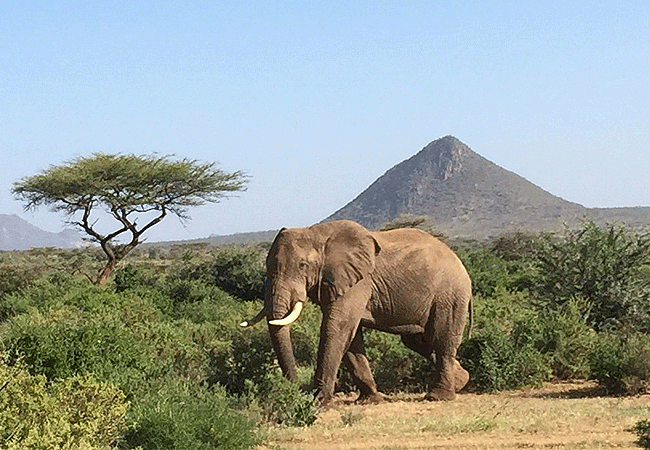
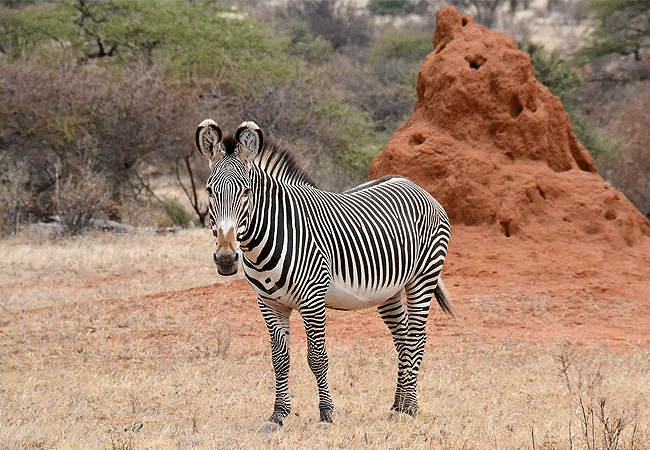
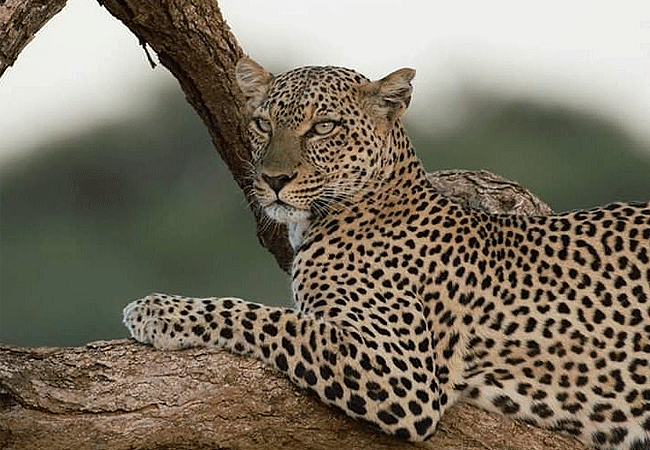

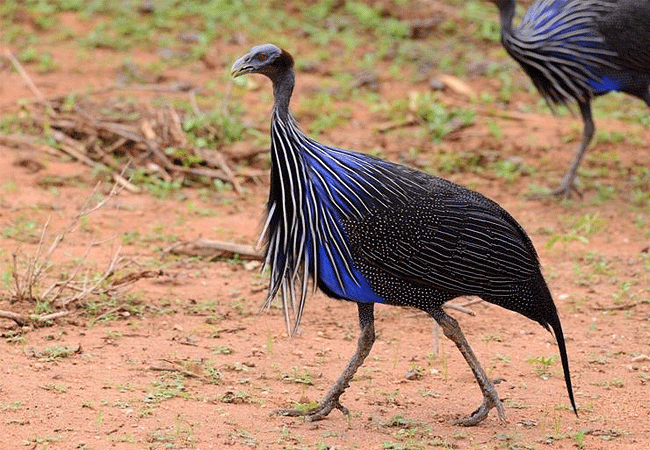
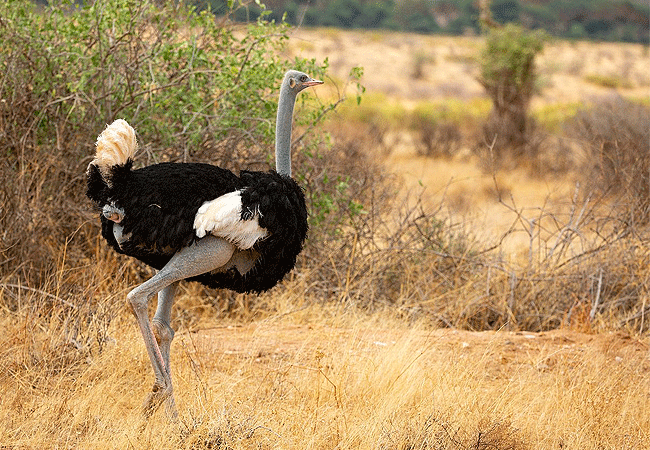
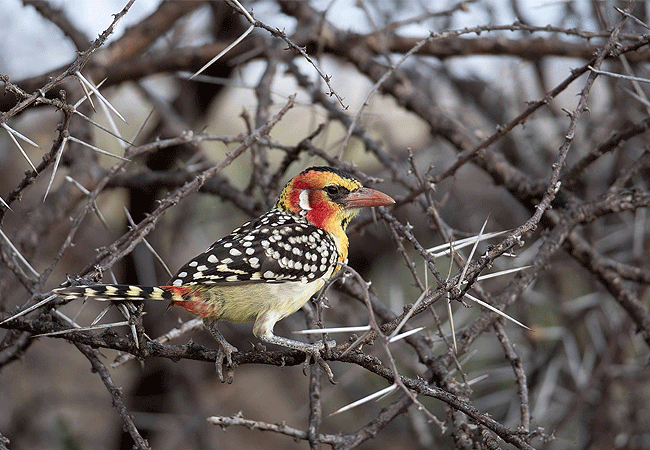


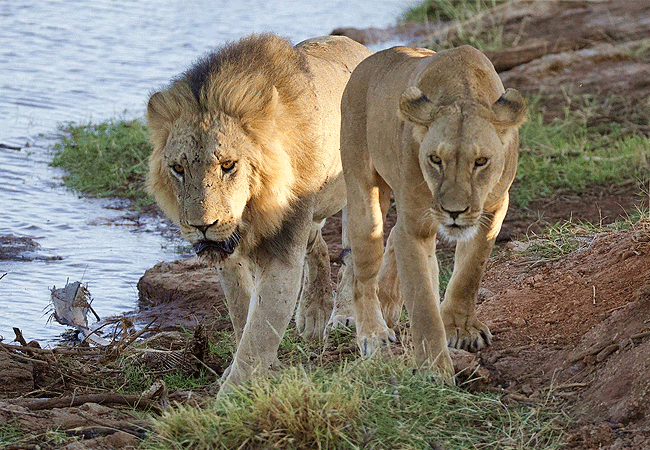
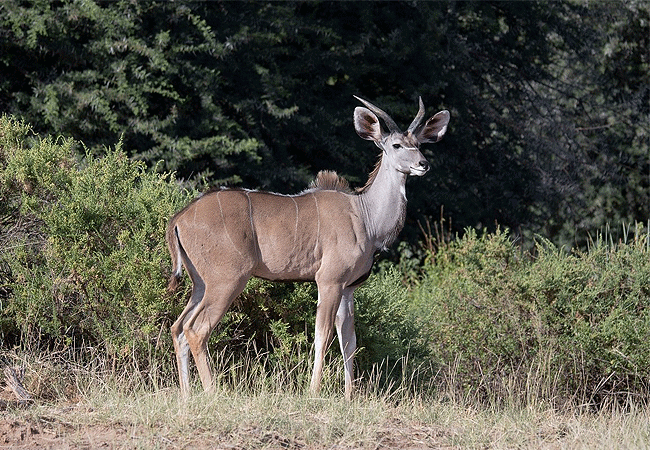



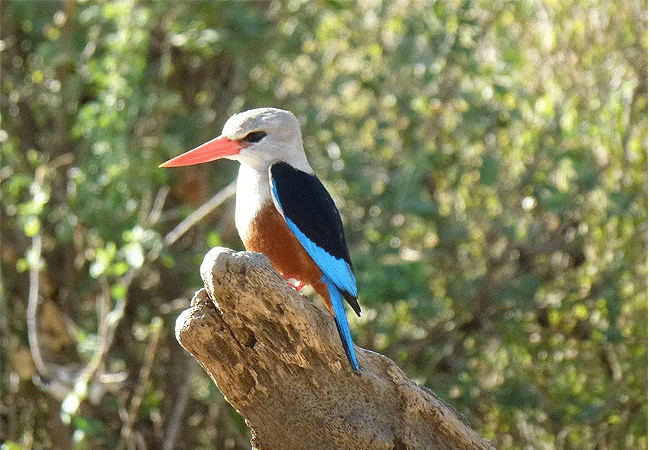
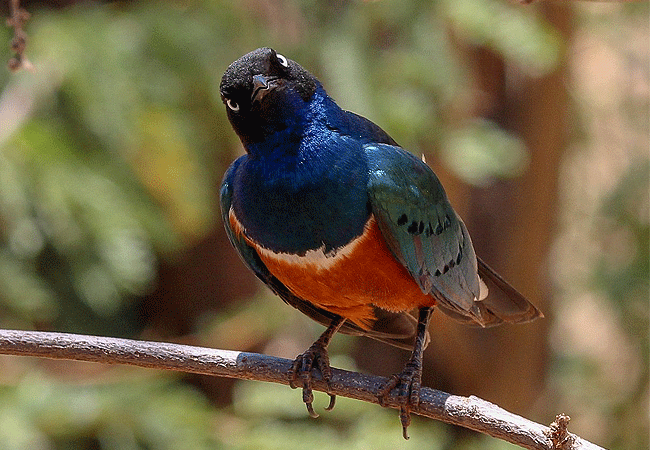
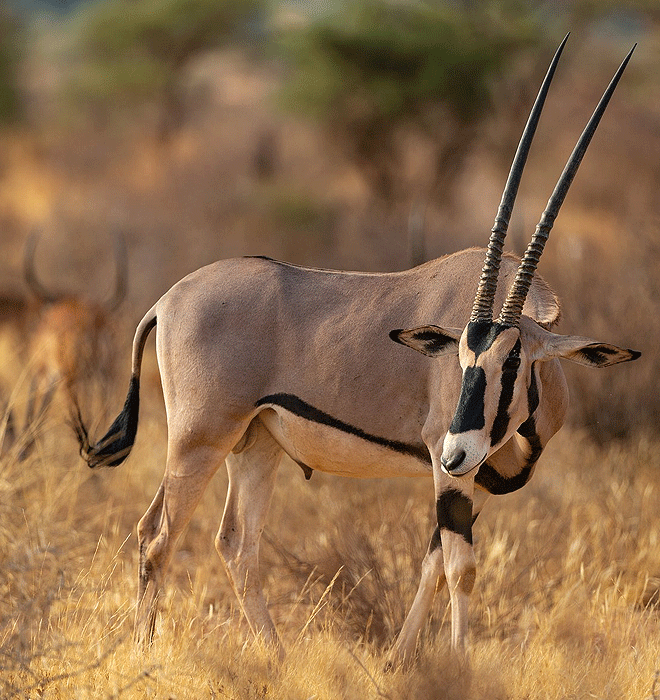
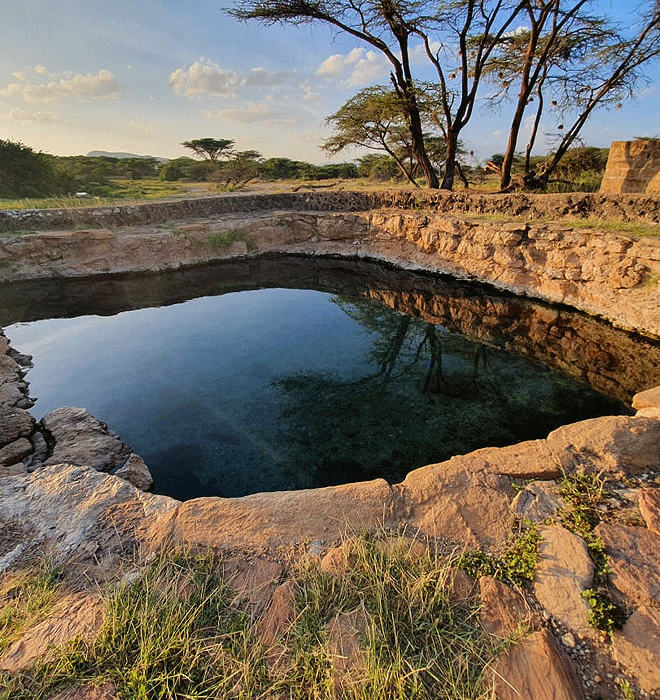
Buffalo Springs National Reserve Acitvities
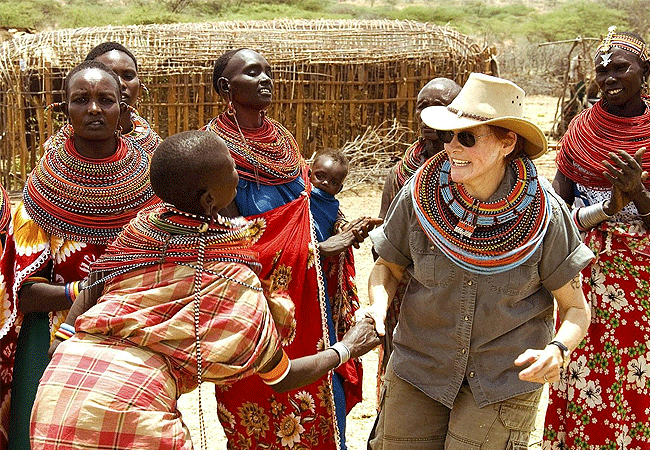
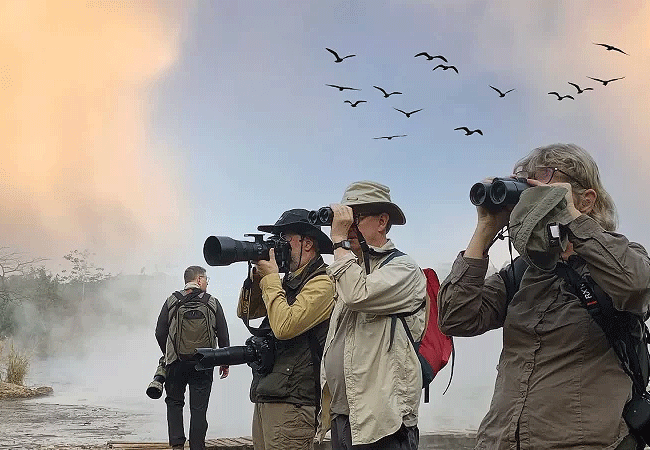
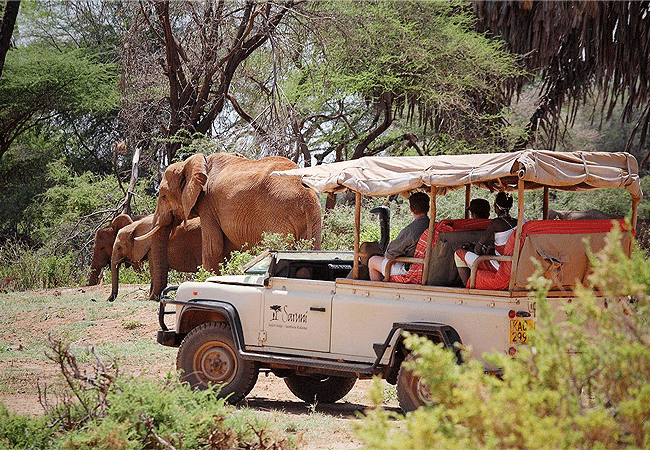

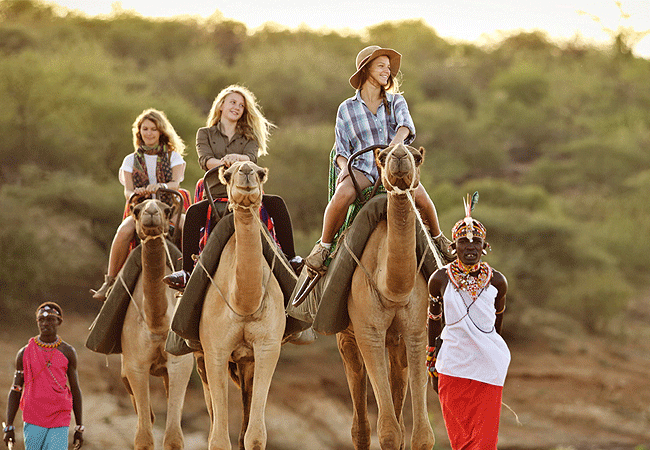
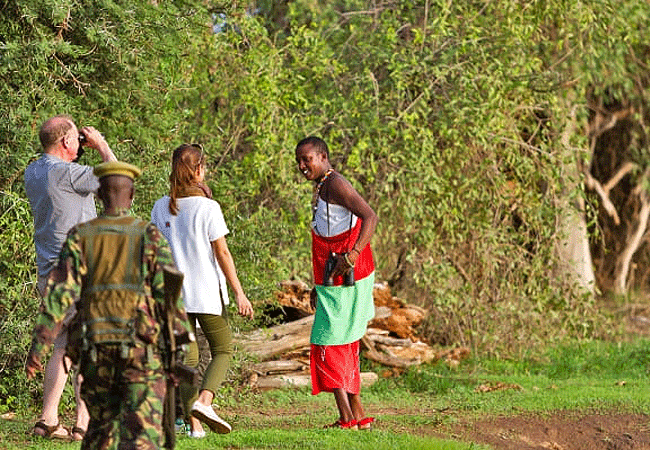
Buffalo Springs National Reserve is considered one of the most untamed wilderness areas in Africa, with much of it being completely inaccessible until recent years. The vast breathtaking landscapes and countless intriguing inhabitants of Samburu have remained largely unaltered by man.
Buffalo Springs game park is managed by the Samburu County Council and the game park offers visitors an authentic bush experience, off the beaten safari track of East Africa. Whether you are a first-time safari-goer or a seasoned adventurer, this region’s stark, wild beauty will stay with you.
The lesser-known Buffalo Springs National Reserve lies in the Samburu County of Kenya, on the banks of the Ewaso Nyiro River in Northern Kenya. It is spread over an area of about 131 km² (51 square miles) some 355 km north of the vibrant city of Nairobi.
Buffalo Springs National Reserve borders Samburu Game Reserve which is on the other side of the river, as well as the Kalama Community Conservancy, so you can easily combine visits to these parks. The Namunyak Wildlife Conservancy is also just a little further north.
One of Kenya’s three northern parks (including Shaba and Samburu), Buffalo Springs is part of the spectacular Great Rift Valley and reaches altitudes of between 850 metres (2,790 ft) and 1,230 meters (4,040 ft) above sea level in some places.
The reserve is centered around the permanent water source of the Ewaso Nyiro River that lazily winds through the length of the park, giving rise to doum palm groves and thick riverine forests which attract a wide variety of animals, big and small.
The shade of the lush vegetation along the water’s edge is a haven for animals seeking shelter from the equatorial sun and those coming to drink. Animals trek to this life-giving water source from an otherwise bone-dry landscape and the natural serenity of the river banks provides prime wildlife spotting and game viewing opportunities.
The reserve has a rich and diverse collection of wildlife with an abundance of the Samburu “Special Five” animals which includes the Grevy’s zebra, Somali Ostrich, Reticulated Giraffe, Gerenuk, and the Beisa Oryx.
These animals are mostly only spotted in Northern Kenya and are not usually found in other typically visited reserves in Kenya such as Masai Mara or Amboseli. The most common mammals easily spotted are elephants, present in large numbers across the reserve.
The reserve is also home to Grant gazelles, Impalas, Waterbucks, Dik-diks, Hippos, Olive Baboons, Warthogs, Lions, Leopards, Cheetahs, Cape Buffalo, Hyenas, Elands, Jackals, Klipspringer, Mongooses, and Wild Dogs and Bats.
Birdlife is abundant with over 450 species recorded.
Buffalo Springs National Reserve Vegetation & Wildlife
The vegetation of Buffalo Springs Nature Reserve consists of doum palm and acacia riverine forest and further from the river acacia woodland interspersed with areas of scrub and grasslands. Buffalo Springs National Reserve’s vast expanse of remote pristine wilderness borders the Ewaso Ng’iro River to the north, which separates it from the Samburu Game Reserve.
The reserve has a rich and diverse collection of wildlife with an abundance of the Samburu “Special Five” animals which includes the Grevy’s zebra, Somali Ostrich, Reticulated Giraffe, Gerenuk, and the Beisa Oryx, animals that are mostly only spotted in Northern Kenya and are not usually found in other typically visited reserves in Kenya such as Masai Mara or Amboseli.
The reserve is also home to a population of close to 900 Elephants – who still roam freely enjoying the vast beauty of Africa and often have a reddish appearance from the red earth that they use to have dust baths. Sadly, there are alarmingly few rhinos left in this area due to the unscrupulous poaching activities plaguing much of Africa’s wild spaces.
The Ecosystem is also home to Grant gazelles, Impalas, Waterbucks, Dik-diks, Hippos, Olive Baboons, Warthogs, Lions, Leopards, Cheetahs, Cape Buffalo, Hyenas, Elands, Jackals, Klipspringer, Mongooses, Bats and some of the biggest crocodiles in Africa.
The reserve also has packs of Wild Dogs though sightings are infrequent as these animals have a rather large distribution area, within which they are constantly moving. For bird-watching guests, Buffalo Springs is a mecca of avifauna with more than 450 species recorded that includes birds that are found in the northern bush country and riverine forests.
The lesser kestrels and Taita falcons are globally threatened species that thrive under the protection of the reserve. Other vulnerable species include great egrets, martial eagles, African darters, and yellow-billed oxpeckers. Common species include bee-eaters, yellow-billed hornbills, lilac-breasted rollers, grey-headed kingfishers, and many more.
Buffalo Springs National Reserve Seasons | Best time to go | Acitvities
Wildlife Game Viewing
Buffalo Springs National Reserve is renowned for its exceptional game viewing, offering visitors the chance to see a wide range of wildlife. The “Samburu Special Five”—reticulated giraffe, Grevy’s zebra, Somali ostrich, gerenuk, and Beisa oryx—are species unique to the area.
Other animals commonly seen include elephants, lions, leopards, cheetahs, buffaloes, and more. Game drives typically take place in the morning, afternoon, or evening, with the Ewaso Nyiro River being a prime spot to observe elephants bathing and crocodiles resting along the banks. The drives are conducted in safari vehicles and led by experienced guides who provide insight into the ecosystem and animal behaviors.
Bird Watching
With over 350 bird species recorded, Buffalo Springs is a haven for birdwatchers. The semi-arid climate and diverse landscapes—ranging from riverine woodlands to open savannah—support a wide variety of birds.
Visitors can spot species like the Somali ostrich, vulturine guineafowl, Egyptian vulture, and various eagles. The best birdwatching is in the early morning, and guided birding tours are available to help enthusiasts make the most of their experience.
Samburu Cultural Village Visits
A visit to a Samburu cultural village offers a unique insight into the traditional lifestyle of the Samburu people. Closely related to the Maasai, the Samburu are semi-nomadic pastoralists known for their vibrant attire, intricate beadwork, and cattle-herding practices.
During a visit, guests can witness traditional dances, songs, and rituals, as well as learn about the construction of their homes (known as manyattas) and their day-to-day life. The visit also provides an opportunity to purchase handmade crafts, supporting the local community.
Guided Nature Walks
For a more intimate exploration of the reserve, guided nature walks are a great option. These walks are led by knowledgeable guides who share detailed information about the smaller elements of the ecosystem, such as animal tracks, insects, plants, and trees.
Walks often follow trails near the Ewaso Nyiro River, allowing visitors to appreciate the tranquility of the landscape and get up close to wildlife while learning about the medicinal uses of various plants.
Swimming at Buffalo Springs
Although swimming in Buffalo Springs’ natural pools is no longer allowed, the springs remain a vital water source for wildlife, especially during the dry season. These clear water springs are an important feature of the landscape and draw numerous animals for drinking and cooling off, making them a key spot for wildlife viewing and photography.
Visiting the Singing Wells
The Singing Wells are a fascinating cultural experience unique to the Samburu region. At these traditional water wells, Samburu men sing songs to call their livestock, with each family having its specific song that the animals recognize.
The men work together in a rhythmic system to draw water from the wells for their animals, singing in unison as they do so. This ritual offers a rare glimpse into the deep connection between the Samburu people and their livestock.
Climb Mount Ololokwe
Just outside Buffalo Springs, Mount Ololokwe is a sacred mountain for the Samburu people and offers adventurous visitors a chance to embark on a challenging hike. The climb rewards trekkers with stunning panoramic views of the surrounding plains. For those interested in Samburu culture and natural beauty, the climb adds an exciting physical challenge to the experience.
Visit the Umoja Women’s Village
Near Buffalo Springs, Umoja is a women-only village established as a haven for women escaping violence or cultural oppression. A visit to Umoja offers a powerful insight into the resilience of these women and their community. Visitors can learn about their crafts, way of life, and the village’s mission while supporting their efforts by purchasing locally made crafts.
Camel Trekking Safaris
For a more traditional way of exploring the landscape, camel trekking safaris are available. These treks offer a quieter and eco-friendly way to traverse the reserve. Led by experienced handlers, camels allow visitors to get closer to the wildlife and enjoy the scenery at a more relaxed pace, making it a memorable way to experience the African wilderness.
Bush Meals & Sundowners
No safari experience is complete without the traditional bush meals and sundowners. Guests can enjoy specially prepared meals served in scenic outdoor settings within the reserve, often near the Ewaso Nyiro River or other tranquil spots. Sundowners provide the perfect way to end a day of exploration, sipping on a drink while watching the sunset over the African savannah, and creating unforgettable memories.
Visit the Reteti Elephant Sanctuary
Located near Buffalo Springs, the Reteti Elephant Sanctuary is a rescue and rehabilitation center for orphaned elephants. Visitors can learn about the sanctuary’s conservation efforts and the challenges elephants face in the region. It provides a heartwarming and educational experience for animal lovers, with the opportunity to see rescued elephants up close.

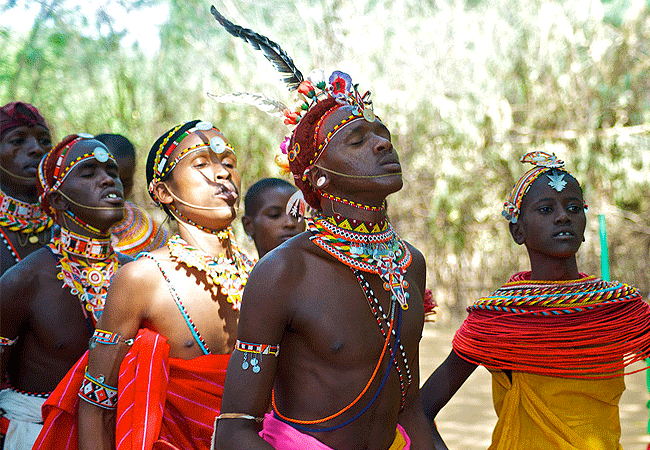
Tribal Samburu People
The Samburu are Nilotic, semi-nomadic shepherds who live in north-central Kenya and speak the Samburu dialect of the Maa language, which is a Nilotic language. The Samburu sub-tribe is the third largest in the Maa community of Kenya and Tanzania, after the Kisonko (Isikirari) of Tanzania and Purko of Kenya and Tanzania.
Samburu people just like the Maasai tribe, still retain many of their traditions as they live largely untouched by modern-day civilization, in areas surrounding Samburu National Reserve and to the South of Lake Turkana. So why visit a Samburu village and what do you get to see?
This one-hour visit to a Samburu village is a chance to interact with Samburu people, get a glimpse into their culture and unique way of life, and see firsthand some of their customs and practices. The Samburu Cultural visit is typically an excursion included in a longer multi-day Buffalo Springs/Samburu safari tour.
The tour includes a brief interactive visit to the village, which usually happens to be on the borders of the Samburu game reserve. The Samburu people live in huts, which are round in shape with a small entrance closed by a blanket; they have no windows but only two holes which serve to filter the light and let the smoke of the fire that usually burns inside, be released outside; it is usually used for cooking.
The huts are built by women using interwoven sticks, mud, and cow dung; they can be easily dismantled and transported and mounted elsewhere. The interior of the hut is divided into two small rooms, one for the husband and sons, and the other for the wife and daughters.
A cluster of these huts, which form a village called ”manyatta” in the Samburu language, consists of four to ten families; a village is generally not permanent; it settles in one place for two months at most, and after this, it moves to other sites, in the constant search for new pastures for livestock.
The singing, dancing, colourful and intricate beadwork, along with their immeasurable wealth of knowledge about the animals and environment, make meeting these gentle people a very special experience.
Buffalo Springs Game Reserve Safari Lodges & Camps
Buffalo Springs National Reserve is within Isiolo District and is located on the banks of the Ewaso Nyiro River in Kenya on the other side of the river is the Samburu National Reserve and nearby the known Shaba National Reserve (Joy Adamson of ‘Born Free’ film).
Buffalo Springs Game Reserve is accessible by road via Isiolo, about 5 5-hour drive from Nairobi through Nanyuki on a tarmac road to Isiolo, then another 22 kilometers to Buffalo Springs. There are currently 3 accommodation options in Buffalo Springs National Reserve. They are:
Surana Buffalo Springs Camp Samburu: A luxury safari lodge in Buffalo Springs National Reserve – a protected area in Isiolo County in northern Kenya, 85 km North of Mount Kenya and about 355 km from Nairobi (approximately 5 to 6 hours by road). The camp has 16 Tents each with individual plunge pools which offer breathtaking views of the Ewaso Nyiro River and in the backdrop, Mt Ololokwe – Sacred Mountain for the Samburu people.
The camp has 16 tents each with individual plunge pools all enjoying views of the undulating Ewaso River and in the backdrop, Mt Ololokwe, and is about 350 km north of the vibrant city of Nairobi.
Surana Buffalo has an eagle-view terrace perched above the main lounge and dining, where you can take in some of the most beautiful sunsets and continue the journey into the night, stargazing at the myriad of celestial constellations. There is also an airy bar & lounge leading to a cosmopolitan restaurant serving delicately prepared meals.
The lodge’s main infinity pool and spa is carefully bedded into a natural ridge and offers an oasis for guests to cool off after an exciting game drive, lounging, sipping on your favorite cocktail, or being pampered by a masseuse. Click Here to find out more.
Ashnil Samburu Camp: A mid-range safari camp located in Buffalo Springs Game Reserve on the banks of Ewaso Nyiro River. The camp is 12 km from Ngare Mara Gate near Archers Post and 325 km – a 5-hour drive) from Nairobi. The flying time from Nairobi is about 60 minutes and scheduled flights land at Buffalo Springs Airstrip which is 12 km away from Ashnil Samburu Camp. There are a total number of 19 deluxe en-suite tents each featuring a decked terrace with views of the Ewaso Nyiro River.
The camp has 30 luxury hexagon tents; 18 double tents, 9 twin beds tents, and 3 triple beds. Each of the exclusive comfortable deluxe tents features a dressing area, sitting area, luggage rack, safe, Parquet floors, wardrobe, and en-suite bathroom with shower cubicle.
There is a wooden decked terrace with a perfect view of the Ewaso Nyiro River and a beautiful surrounding landscape. The open-sitting restaurant located in the main building overlooks the Ewaso Nyiro River and can seat up to 100 guests.
The restaurant serves set buffets featuring international, oriental, and traditional African cuisine. The lounge is also located in the main building. The décor has an African touch that makes it a wonderful place to pass time and relax and can accommodate up to 60 guests. Click Here to find out more.
Samburu Simba Lodge: The lodge has 7 villas that house 70 rooms and every villa has 6 rooms on the ground floor and 4 rooms on the first floor. The rooms are in singles, doubles, and interconnecting rooms, spacious, well well-furnished with a reading desk and several lounge chairs. The en-suite bathrooms have a shower with warm or cold water.
Samburu Simba Lodge also has the following features: safety deposit box, Wi-Fi, banqueting facilities, 24-hour room service, currency exchange, pool/ snooker, gift shop, meeting rooms, multilingual staff, non-smoking area, dry cleaning/ laundry, and facilities for disabled.
The lodge serves a wide variety of African and continental dishes that can be enjoyed at the on-site restaurant. Outdoor dining is available on the terrace which is fitted with four-sitter tables. There is also a well-stocked bar that offers a variety of soft drinks, choice wine, and other alcoholic drinks. Click Here to find out more.
Hotels near Buffalo Springs Game Reserve and Archers Post include Umoja Campsite, Lion’s Cave Camp, Samburu Sopa Lodge, Sarova Shaba Game Lodge, Bomen Hotel, Regency Mount Kenya Hotel, Regency Mount Kenya Hotel, Samburu Intrepids Tented Camp, Kisimani Eco Resort & Spa Ltd, Shamz Hotel, Grande Hotel, Gamachu Gardens, and Samburu Larsens Tented Camp,
Others include Samburu Saasab Camp, Samburu Bedouin Camp, Samburu Lodge, Samburu Sentrim, Samburu Elephant Bedroom Camp, Samburu Elephant Watch Camp, Samburu Kitich Camp, Samburu Saruni Lodge and Samburu Joys Camp.
Buffalo Springs has five campsites with bad or no facilities at all. The public campsites are along Champagne Ridge, close to the Isiolo or Gare Mara Gate. There are three campsites in Samburu, scattered along the Ewaso Nyiro between Samburu Lodge and the West Gate.
All of them are cleared spaces shaded by trees, with scarce services. The sites closest to Samburu Lodge are safer. From the Butterfly public site, you may walk into the lodge for refreshment but do it only until 7 PM, since at this time the lodge gate is closed and the employees bring the leopard’s bait to a tree across the river.
If you happen to walk around after this time, seek the protection of an armed escort. The Vervet campsite, also close to the lodge, is frequently used by safari agencies.
Entrance Fee to Buffalo Springs National Reserve
2025 Buffalo Springs National Reserve Entrance Fees |
||
Citizen/ Resident Rate Per Person Per Day |
Non-Resident Rate Per Person Per Day |
|
| Adult | 1000 Kenya Shillings | 80 US Dollars |
| Child | 500 Kenya Shillings | 40 US Dollars |
Notes
* Child refers to persons from three years but below 11 years
* Resident refers to persons of other nationalities residing in Kenya with valid documentation from the Kenyan government
* Citizen – A native or inhabitant of East Africa Countries (Kenya, Uganda, Tanzania, Rwanda, Burundi, and South Sudan) with valid identification documents or passport
* Daily – Fee paid for a single entry to a national park, national reserve, or sanctuary and which shall be valid for no longer than twenty-four hours
Booking & Reservations Buffalo Springs National Reserve Contact
Mobile: + 254-721-242-711
WhatsApp: +254-721-242-711
Reservations: +254 718-179-967
Email: [email protected]
Website: https://africanspicesafaris.com

